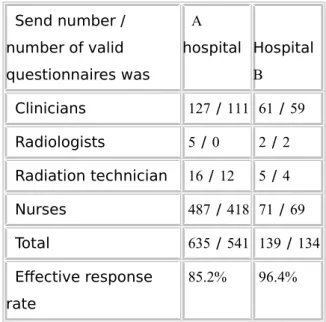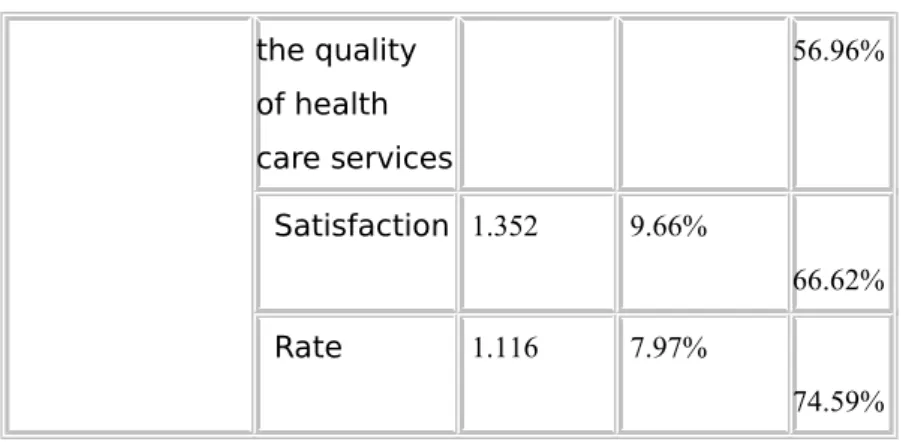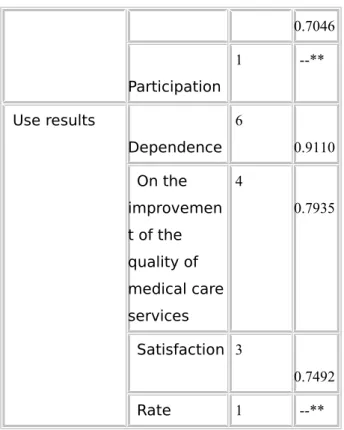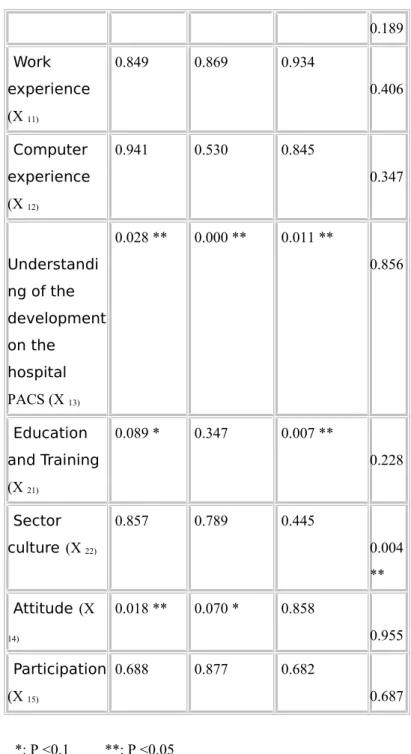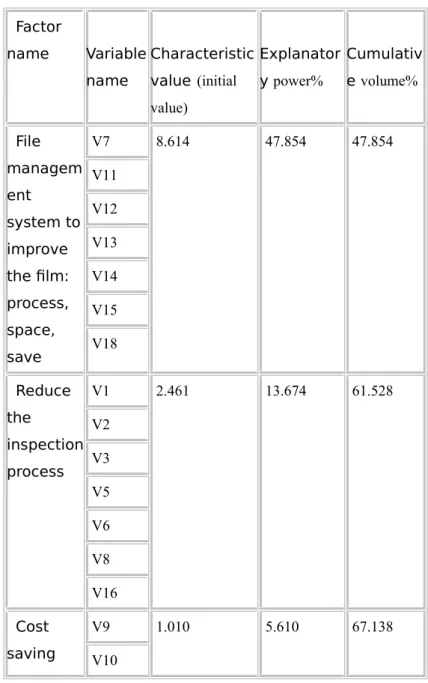From the users point of view of the use and benefits of hospital PACS: two-stage study
With Jun Wei
aKuei-Li Lin
bGuo Zhengzong
ca
Department of Information Management, National Central University
bChi Mei Foundation Hospital
cDepartment of
Health, the new camp hospital
a.
s9443003@cc.ncu.edu.tw
Summary
This study from the user's point of view, conducting a two-stage study. Through
the first phase of the questionnaire, users of the hospital PACS has formally launched an investigation to find out in the hospital environment and user
interaction characteristics under the influence of PACS for medical use behavior.
The second stage is used for two different types of cases in the hospital PACS users of interviews and questionnaires. PACS for hospitals to understand the improvement of the quality of medical services and the specific benefits to the organization. The first stage of the study results indicate that the hospital PACS for the development of health care will affect their understanding of the
dependence of the system, its PACS for medical care services arising from the quality of the cognitive improvement, and system satisfaction. In addition, the attitude of medical staff with regard to its system dependency produced by PACS quality improvement of medical care services will have significant cognitive effects. Finally, education and training programs will affect user dependence and satisfaction. The medical department of culture is the key to influence system usage. Case study found that hospitals, for hospital wide PACS system users, the impact of its major proposed including the improvement of management
mechanism, reduced inspection processes, and cost saving. Relative to Build Mini-PACS to hospitals, the benefits of their produce only at reducing the cost saving factor.
Keywords: user's point of view, medical PACS (PACS), Case Study
Abstract
Based on user perspective, the purposes of this study is attempted to understand the causes and effects of PACS user behavior. Two phases study was employed. The first phase was focused on the effects of user and environment interaction on user behavior. The second phase was focus on the effects and benefits of PACS. Two selected cases were included: large scale (hospital wide) PACS and Mini- PACS. Interview and survey was carried out in selected hospitals. Three main findings were proposed and discussed in first phase. First, user understanding of PACS development will affect their
dependence on PACS, perceived service quality improvement, and system satisfaction. Additionally, user attitudes will affect their dependence on PACS and perceived service quality improvement.
Finally, training programs will affect user dependence and satisfaction. Department atmosphere will affect system utility. Results of second phase indicated that for hospital wide PACS, three main effects was proposed including improve management mechanism (process, space, and storage), refine working process, and cost saving. But, the final one was not found out in Mini-PACS.
Keywords: User Perspective, Picture Archiving and Communication Systems (PACS), Case Study I. Introduction
The use of information systems in health care service delivery has become the single foreign efforts to develop domestic and foreign health care one of the key.
Raghupathi and Tan (1999) that the use of information technology in terms of medical institutions, has become a strategic investment. Among them, digital medical imaging, is important in many applications, the basis of medical information. As
digital technology advances in medical imaging, coupled with changes in the environment of China's medical industry, are strengthening the hospital for medical digital imaging needs. Therefore, medical PACS (Picture Archiving and Communication Systems, PACS) development of information technology has become in many hospitals is one important milestone. Although the development of PACS has become a major hospital in one of the key IT investment, but in the past the PACS study, is still more to the technical level based, less a scholar from the person (user) point of view to understand the hospital medical staff PACS actual usage. However, the medical staff on the actual use of the system, it is an important indicator of system success. Therefore, the purpose of this study is from the user's point of view, understanding the factors that affect health care use of PACS, as well as the impact of PACS and effective, as the hospital system in the promotion and evaluation of reference. This study is a two-stage study.
The first stage of the way through the questionnaire for users of the hospital
system has been formally launched an investigation to find out in the hospital
environment and user interaction characteristics under the influence of PACS for medical use behavior. The second stage is used for two different types of cases in the hospital PACS (hospital wide PACS-A Hospital and Mini-PACS-B hospital) of the user interviews and questionnaires. Hospital through the case-depth
interviews of key personnel and user survey, about PACS for hospitals to improve the quality of medical services and the specific benefits to the organization.
Two, the literature
1, PACS in use - the user's point of view
Pomerantz et al (1999) PACS system development under the practical experience of that hospital PACS system use and acceptance depends on whether the function provided by the system to meet the needs of the users. In particular, all hospital- based PACS system must meet the needs of different departments and users, so the system can meet or exceed the needs of users of the success of a PACS system, build one of the important key factors. Education and training provided for users familiar with the functions of the system, the development of the PACS, the system development process has become a necessary basic tasks. In
general, PACS system, the education and training methods including computer- aided training, online training, as well as traditional methods (Protopapas et al., 1999).
The level of user demand for the system including the main image acquisition, image transfer, image display, image management, image of easy accessibility, reports on the impact of patients, education and training, system compatibility, etc. (Watkins, 1999). Watkins (1999) pointed out that the PACS system of education and training according to their area of experience can be of two main phases: the first aimed at all clinical and radiology staff for formal training courses. The
second stage, and then do business according to the nature of other subjects more in-depth education and training.
Second, PACS impact and effectiveness
From the theoretical level, for, PACS of the build can be positive benefits for the hospital, including the overall operation and management of hospitals, health care personnel on operations and service quality, the impact on patients, the impact of environmental protection, etc. . However, some scholars pointed out that
although the PACS, the hospital can build a positive impact, but overall
productivity gains are not achieved the desired goal, but the major may be
attributed to build the hospital's PACS type (hospital wide or Mini -PACS), and the
hospital is really to improve processes (Siegel & Reiner, 2002), in which the author pointed out that with the hospital PACS, build and process reengineering, can the use of PACS systems to achieve the desired purpose. Therefore, the authors provide the information, and further pointed out that the traditional radiography process takes about 59 steps to complete the process it will take three to five days. By the use of PACS can be shortened to nine steps process will take time also reduced to one or two days or less (Siegel & Reiner, 2002). Pilling (2003) pointed out that from the user's point of view, PACS of the hospital's biggest benefits include improving the quality of medical imaging, less frustration, improved quality of work and so on. In addition, Gell and Bauman (1999) pointed out that large-scale (all homes) PACS system can change the radiation department staff and the interaction between clinicians. The highly integrated PACS system to provide timely and complete information to users, in order to enhance the overall quality of medical care hospital. Overall, large-scale (hospital wide) PACS is able to generate benefits for the hospital, including, we can use image processing tools (example: resize, scroll, dimension, etc.), online digital computer-aided diagnostic tools, interactive Books, online literature search and other mechanisms, to improve the quality of medical diagnosis. Through remote consultation, to
provide patients with better medical care service quality. Digital imaging network systems can reduce the delay time, but also through media reports and video consultation to provide better quality health care services. Save money, including reducing the use of film, film to reduce the physical storage space, reduce management costs and so on.
In addition, Becker and Arenson (1994) study pointed out, PACS benefits generated can be divided into four main categories, namely, the diagnosis of the benefits arising out of acts, on the benefits generated by physicians, the benefits generated by the patient, and the the benefits generated by the hospital as a whole. The first category: the diagnosis of the benefits arising out of acts, including real time data to improve patient access, improve patient access to historical data, data integration and accelerate access time, and better diagnostic quality. The second category, on the effectiveness of some physicians, there are better patient management and disease prevention, better health care service quality, reduce waiting time, and reduce patient costs derived from data loss.
The third category, the benefits generated by the patient, including, reducing
patient exposure to X-ray equipment in the frequency, shorter examination time,
to avoid repeated checks, reduce patient exposure to a hazardous radiation
environment, to avoid unnecessary duplication check to reduce the number of
patients to the hospital and the inconvenience of, and to avoid unnecessary adverse effects. The fourth category, the overall benefits generated by the hospital include easier communication between physicians, hospital management better quality, easily obtained by the digital image, enhance the radiation
technician or related education and training of health care quality, and improve health care care personnel about loyalty. Bryan et al (1995) PACS system for the assessment, consideration of proposed 11 elements, including the radiology department at the time of cost considerations into PACS, PACS deployment with other departments in the additional cost required for consideration, with the build PACS Hospital personnel need to employ computer-related increase in the cost considerations, education and training for relevant personnel cost considerations, PACS of the build can save the staff cost considerations, can be considered to reduce the cost of film files, can reduce the storage space consideration of other relevant departments to enhance the productivity level of consideration, can reduce the amount of the consideration of the use of radioactive agents to reduce medical costs in patients with consideration, and for patients with improvement of the overall quality of medical services.
Parameters, the theoretical basis
DeLone and McLean (2003) compiled the recommendations and views in the past scholars put forward an amendment to the information system success model.
Revised model that affect the use of information systems and the satisfaction of the three major factors are information quality, system quality, and service quality. And the system's use and satisfaction of the interaction between the Council and thus generate the benefits of information systems, and the returns generated from the system will respond to the use and satisfaction. Therefore, the interaction between them into a relationship. This study examined DeLone and McLean (2003) based on the concept, the development of a conceptual framework. Order as shown in Figure 1, the use of information systems in this study as the main core of study to explore the factors affecting the use of
information systems, and its use after the impact and effectiveness. Therefore,
this study aims to investigate the first phase of the impact of medical PACS use
factor, the main characteristics and environment interact with users based on the
views. The second phase focuses on the PACS from the user's point of view of
the impact and effectiveness.
Figure 1 Conceptual framework of Wantonly, research framework and methods
This study used questionnaire surveys. Phase one of the main line for several PACS has been used in large hospital staff to investigate. In phase two, the impact of PACS on the health care discussion, in view of all hospital-based PACS and mini-PACS for hospitals as a result of the impact will vary, so the main case against the two selected hospitals (hospital wide PACS: A Hospital ; Mini-PACS: B Hospital) medical staff to conduct interviews and questionnaires.
1. The first stage of the study
The phase structure as shown in Figure 2, there are two main hypotheses:
Hypothesis 1: the user's characteristics will affect the use of hospital PACS.
Hypothesis 2: the hospital environment affects the use of hospital PACS. This
stage primarily for the domestic medium and large hospitals (regional hospitals), the total of 11 hospitals have PACS users to accept the investigation in this study.
Total formal questionnaire sent to 200, after aggregate recycling collection
procedure 48, in which 10 invalid questionnaires, 38 valid questionnaires, response rate was 19% (see Table 1).
Figure 2 structure of the first stage of the study
Table 1 Background of the first phase of the questionnaire respondents had
Intern al Medici ne
Surgic al
Rehabilitati on
Pediatri cs
Nuclea r medici ne
Orthoped ics
Radiolo gy
Emerge ncy Depart ment
Oth
er
Number of people
13 6 1 2 1 3 4 5 3
Percent age
34.21% 15.79% 2.63% 5.26% 2.63% 7.89% 10.53% 13.16%
7.89
% Table 2 Effect and Benefit PACS compiled
The impact and benefits of PACS
Question Number
(1) complete inspection process to reduce
3 (1) single-chip reduced by the opening, through the film process. (V1)
(2) to reduce check-in counters of the printed name cards to write, darkroom film development process. (V2)
(3) reduce the reported X-ray report when making the allocation of access to old films and other films, records processes. (V3)
(2) to enhance patient convenience and accuracy of the information obtained
1 (1) digital inspection equipment required for patient information provided by the health care information systems, data access speed, data accuracy high. (V4)
(3) enhance the long-term storage of images
2 (1) digital image storage media, such as high-capacity digital disc (DVD), digital tape (Digital Tape), etc., storage capacity, the required storage space smaller than the X- ray film. (V5)
(2) digital image storage media, such as high-capacity digital disc (DVD), digital tape (Digital Tape), etc., storage period longer than the X-ray film. (V6)
(4) enhance the rate of completion of the report
2 (1) Check the file handling was not required, can immediately make a report to enhance the speed completion of the report. (V7)
(2) easy access to old films, the report can be made
readily available, and promote the completion rate. (V8)
(5) cost saving 2 (1) saving money related supplies (X-ray film, film
medicine, X-ray Woods bags, etc.) consumption costs. (V9)
(2) saving money related supplies (X-ray film, film medicine, X-ray Woods bags, etc.) inventory costs. (V10)
(6) reduce the demand for space use
4 (1) reduce the supplies inventory (supply warehouse, radiology department) use of space. (V11)
(2) reducing the long-term storage of X-ray film file (X-ray piece of the library) the use of space. (V12)
(3) reducing the X-ray film file handling (X-ray film archives) the use of space. (V13)
(4) reduce the darkroom and washing machine use of space. (V14)
(7) to save human work 2 (1) processes to reduce the file (X-ray check, through film, but also films, report distribution, archiving), save the file operations manpower. (V15)
(2) labor saving washing. (V16)
(8) to avoid the loss of X- rays
2 (1) to avoid the location of the file go wrong, causing all the image data loss. (V17)
(2) avoid teaching the value of a personal possession by X-ray, resulting in loss of some or all of the images. (V18)
Second, the second stage of the study
The main purpose of the second stage of the study is to identify the impact of PACS and benefits. And different scale PACS (hospital wide PACS, and Mini-PACS) were compared. First of all, collate and analyze the literature based on the results, respectively, for the build hospital wide PACS and Mini-PACS of the hospital as a case study of selected hospitals. Hospital wide PACS of hospital A hospital; Mini-PACS of the hospital for the B hospital. A hospital is a regional teaching hospital. Founding the hospital since 2002, full implementation of the whole hospital PACS, and reached the hospital-wide filmless objectives. B
hospital district hospital. With the "Hospital, Department of Health Planning and
Implementation of PACS" policy, the hospital began in January 2004 PACS system.
Currently, only four divisions (internal medicine, family medicine, orthopedics, and surgery) to implement PACS, so is the size of Mini-PACS. In addition, at the same time the other divisions of the PACS is still under construction, so far the hospital still uses the digital and physical images dual track approach.
Comprehensive theoretical level (literature reviews), and practical level (hospital interview), this study sorted out the eight categories of total impact of PACS, and 18 items were designed to survey hospital staff as a case basis. Eight categories include: (1) reduce the full inspection process (2) to get data to enhance patient convenience and accuracy (3) to enhance long-term storage of images (4)
enhance the rate of completion of the report (5) cost saving (6) lower space use requirements (7) save job human (8) to avoid loss of X-ray film (see Table II). The
second phase, mainly for two selected hospitals PACS users survey, which included clinicians, radiologists, radiology technicians and nurses (see Table 3).
Table 3 The second stage of the study questionnaire sent to several / recycling numbers
Send number / number of valid questionnaires was
A
hospital Hospital B
Clinicians 127 / 111 61 / 59 Radiologists 5 / 0 2 / 2
Radiation technician 16 / 12 5 / 4
Nurses 487 / 418 71 / 69
Total 635 / 541 139 / 134
Effective response rate
85.2% 96.4%
Wu, data analysis
1, the first phase of data analysis (A) factors
Users to extract the characteristics of the main constructs of five variables: work
experience, computer experience, understanding of the development on the
hospital PACS, attitudes, and participation. Construct the main hospital
environment to extract the two variables: education, training and culture sectors.
The use of PACS constructs were extracted four factors: dependence on the improvement of the quality of health care services, satisfaction, and utilization, consistent with the research framework Township. These variables could explain the various dimensions of total variance 79.28%, and 74.59% (Table IV).
Form factor analysis four dimensions
Dimension name
Factor
name Eigenvalu
e
Explanator y power
Total volum e
"User
characteristics"
and "hospital environment"
Work experience
6.090 24.36%
24.36%
Computer experience
4.473 17.89%
42.25%
Understandi ng of the development on the hospital PACS
3.200 12.80%
55.05%
Education and training
2.060 8.24%
63.29%
Department al culture
1.504 6.02%
69.31%
Attitude 1.334 5.34%
74.65%
Participation
1.157 4.63%
79.28%
The use of
PACS Dependence
5.995 42.82%
42.82%
Improve 1.979 14.14%
the quality of health care services
56.96%
Satisfaction 1.352 9.66%
66.62%
Rate 1.116 7.97%
74.59%
(B) reliability testing
In this study, Cronbach's value as the basis for scale reliability test. In this
study, the value of the variable of proposal for exceeding the minimum threshold of 0.6, reached a quite acceptable standard of reliability (see Table 5).
Table 5 dimensions of the variables related to Cronbach's value
Dimension name
Variable
name Questio
n Number
value
"User
characteristics"
and "hospital environment"
Work experience
4
0.6183
Computer experience
4
0.8013
Understandi ng on the development of hospital PACS
6
0.7927
Education and training
4
0.7479
Department al culture
3
0.7910
Attitude 3
0.7046
Participation
1 --**
Use results
Dependence 6
0.9110
On the improvemen t of the quality of medical care services
4
0.7935
Satisfaction 3
0.7492
Rate 1 --**
--**: Contains only one variable, so no Cronbach's value (C) of hypothesis testing
This study used multiple regression analysis to test for the hypothesis, the results shown in Table 6.
Table 6 user characteristics and the hospital environment for the use of PACS
Depende nce
On the improvem ent of the quality of medical care services
Satisfaction Rate
Durbin-Watson 1.982 2.500 1.711
1.701
R
20.553 0.735 0.591
0.342
Adj-R
20.449 0.673 0.496
0.189
Work experience (X
11)0.849 0.869 0.934
0.406
Computer experience (X
12)0.941 0.530 0.845
0.347
Understandi ng of the development on the hospital PACS (X
13)0.028 ** 0.000 ** 0.011 **
0.856
Education and Training (X
21)0.089 * 0.347 0.007 **
0.228
Sector culture (X
22)0.857 0.789 0.445
0.004
**
Attitude (X
14)

